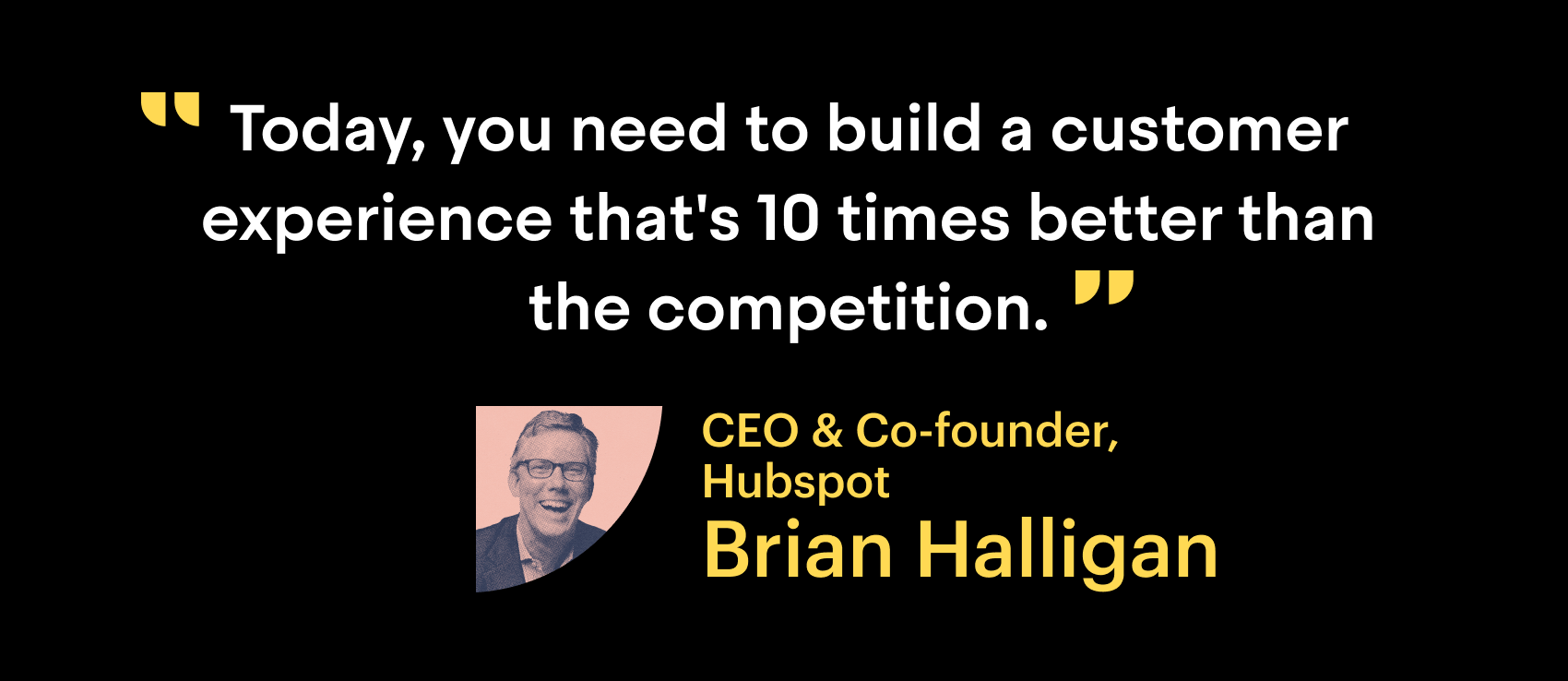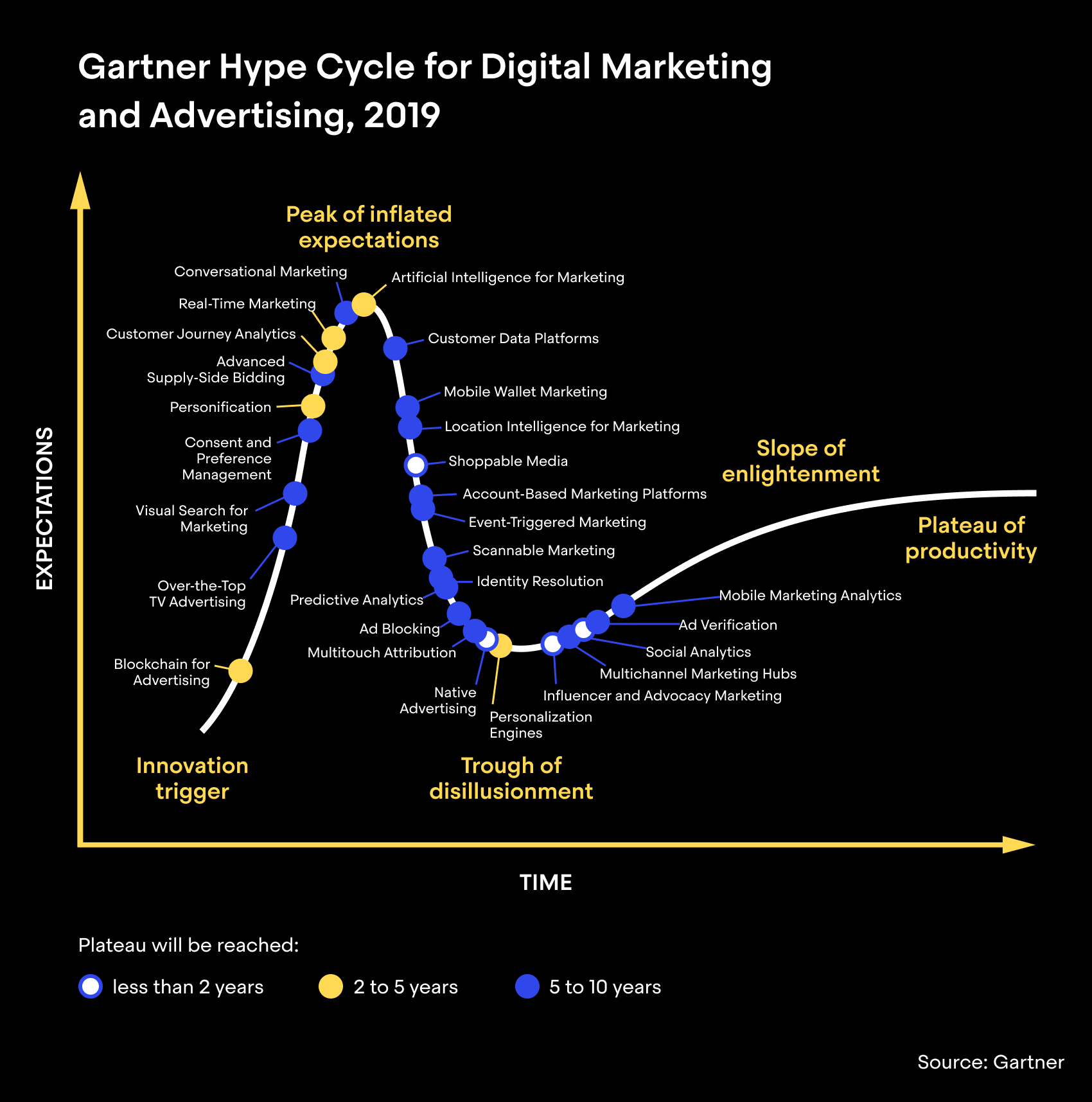Strong customer relationships are more important than ever for business success, but the old ways of communicating and building relationships with customers are broken.
Old communication tools, like email and forms, simply don’t match the ways modern customers want to talk, connect, and receive help. Today, businesses need a modern way to deliver fast, personal, and real-time communication to their customers.
HubSpot’s CEO and co-founder Brian Halligan says that conversational relationships – building relationships with customers through personalized, messenger-based experiences – is the answer.
Not only does a conversational approach help businesses meet rising customer expectations, it’s also a distinct competitive advantage. Brian says:

Intercom’s SVP of Marketing Shane Murphy-Reuter recently caught up with Brian to talk about the importance of conversational relationships and how they can drive exponential business growth. Brian also shares HubSpot’s strategy for creating an industry-defining category that helped more than 86,000 customers in over 120 countries move from unwelcome outbound marketing to permission-based inbound marketing.
Listen to the full episode above or check out Brian’s key takeaways below.
Driving connection and growth with conversational relationships
Back in business school, Brian was working at a venture capital firm, helping businesses think about growth when he had an “aha” moment. He noticed that pretty much every company was leveraging spray-and-pray tactics of cold calling, mass emailing, and generic advertising. They all had the same playbook, but there was one problem – it wasn’t built for the modern human.
At the time, the advent of modern technology, like caller ID, spam protection software, and ad blockers, offered a way to finally dodge brands’ non-relenting bids for attention. Customers who had enough of receiving unsolicited communication quickly armoured up with these new “protection” tools. Brian says:
“My ‘aha’ was that it was impossible to market to a modern human, they were getting good at blocking it out.”
One thing was clear: it was time to throw the old playbook out. This was one of the defining moments that inspired the creation of HubSpot back in 2006. Brian and HubSpot’s co-founder Dharmesh Shah wanted to create a new, more customer-centric playbook. They pioneered a new way of marketing, called inbound marketing, that helped businesses attract, engage, and delight customers by creating valuable content and experiences tailored to them.
Today, many businesses find themselves in the same situation – where the way they communicate with customers is broken. They’re still over-relying on an outdated playbook and clunky tools of the past, like emails and forms, to communicate with customers. But as Brian says:

Just how do you build a customer experience that’s hands down beats the competition? By forgetting the competition altogether and getting hyperfocused on communicating with customers in ways that they welcome, through the modern channels they already use – like messengers.
Recent research shows that customers increasingly expect to interact with brands through chat, with 53% saying they are more likely to buy from a business they can contact through a messenger. What’s more, 80% of consumers are more likely to do business with a company that offers a personal experience, something made much more possible with a messenger.
At Intercom, we call these types of personal interactions conversational experiences. And as far as Brian is concerned, that’s exactly how today’s customers want to communicate:
“People don’t want to email anymore. People live in Slack, they live in the messenger. Email is on a very slow death march – it’s still a very useful tool, when people use it, but the modern worker doesn’t enjoy that medium and doesn’t want to communicate that way. The thing about email is it’s asynchronous. I think that the story of customer experience these days is synchronous.”
Gartner’s 2019 Hype Cycle for Digital Marketing and Advertising echoes this sentiment. When Garner explored which technologies drove the most value for marketers in 2019, the strategies dominating the top of the curve revolved around creating an unparalleled customer experience fueled by a modern business messenger. Chief among them: conversational marketing and real-time marketing.

According to Brian, it’s not the product itself, but the brand and the end-to-end customer experience that’s the core competitive advantage for so many companies today. He advises looking to Slack, Dollar Shave Club, and Zoom as examples of companies that provide a far superior end-to-end customer experience than the incumbents they disrupted.

What do these brands have in common? Just like with conversational experiences, Brian says:
“They’re all easy, they’re all light, they all match their go-to-market experience with the way people actually want to shop and buy.”
Coining a category that disrupted an industry
Creating a successful category pays dividends: companies that create a new category typically capture 76% of the total category market capitalization. But there needs to be a clear vision and purpose – a “why” so to speak.
Even with a clear vision, like HubSpot’s permission-based inbound marketing, forging the path for a new category is no easy feat. There are no pricing benchmarks, no existing business or revenue models to follow, no idea if there’s even a market for it. Brian and his team were met with their fair share of naysayers – not just externally, but also internally within their own marketing team. He says:
“One of the early arguments we had at HubSpot was when we came up with this ‘inbound marketing’ term, and then we hired a marketer. That marketer was saying, ‘You know what? It’s going to be really hard to create an inbound marketing category. No one knows what the heck you’re talking about. Let’s just call HubSpot internet marketing, because it’s internet marketing.”
Despite the opposition, HubSpot persevered and today “inbound marketing” is a term and tactic that has been adapted and embraced by marketers and their customers worldwide. In the United States alone, “inbound marketing” gets searched on Google around 10 thousand times a month and produces over 57 million results.
Proven strategies for creating a transformative category
Success didn’t just happen overnight. Brian urges caution that creating a category “took a village” and a great deal of concerted effort. Instead of just shouting into their own echo chamber and hoping for the best, HubSpot strategically worked with partners in their network to help spread the inbound word. Here’s Brian’s advice:
“You’ve got to have everybody and their brother, all your partners, everyone talking about it in order for it to catch fire.”
Another key to success – something Brian is deeply emphatic about – is creating a strong tension around an “us vs them.” For HubSpot, that enemy was outbound marketing. They knew people were tired of spam and cold calls, so they poured all of their energy into pitting inbound versus outbound (or good versus evil).

Not surprisingly, HubSpot also leveraged inbound marketing to educate the market on the power of inbound marketing. They created a stream of relevant content – from blogs and books to videos and conferences – that taught people how to create and promote content that attracted customers, delighted them, and converted them into loyal customers. Brian shares:
“We have an INBOUND conference, we wrote a book – which by the way, is a huge amount of work. We wrote a billion blog articles about it. We really put our backs into it. And then we created a community around it who supported it. It was a large concerted effort that went into creating it, and we’re still working on it.”
Hubspot’s gamble was right on the money. Over a decade later, inbound marketing has completely transformed the way businesses market and sell and, more importantly, how customers shop and buy. According to a recent report: 48% of B2B buyers engage with between three and five pieces of content before connecting with a salesperson, and 67% of respondents rely even more on content than they did the year prior to inform their purchasing decisions.
The future of business is conversational
Today, the opportunity is clear: with critical relationships and revenue on the line, companies can no longer afford to let their customer experiences stay stagnant, powered by email, forms, and other 10- or 20-year-old ways of working. Instead, forward-thinking businesses can accelerate their growth and differentiate their brand by embracing modern strategies that match the way modern customers want to talk, shop, and buy. If you haven’t already, now’s the perfect time to invest in conversational experiences and lean even more into inbound marketing.
You can also read a full transcript of the interview which has been lightly edited for clarity.
